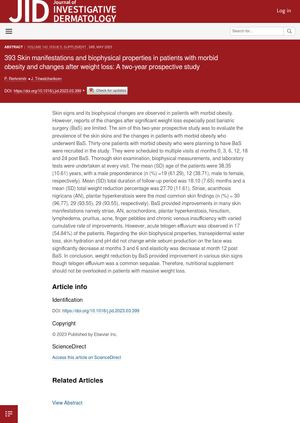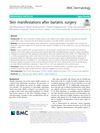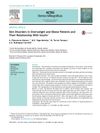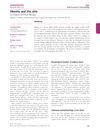Skin Manifestations and Biophysical Properties in Patients With Morbid Obesity and Changes After Weight Loss: A Two-Year Prospective Study
April 2023
in “
Journal of Investigative Dermatology
”
bariatric surgery striae acanthosis nigricans plantar hyperkeratosis acrochordons hirsutism lymphedema pruritus acne chronic venous insufficiency acute telogen effluvium transepidermal water loss skin hydration sebum production skin elasticity weight loss surgery stretch marks AN skin tags hair loss TEWL skin moisture oil production skin firmness

TLDR Weight loss surgery improved several skin conditions in obese patients but often caused hair loss.
This two-year prospective study evaluated the skin changes in 31 patients with morbid obesity who underwent bariatric surgery (BaS). The patients, with a mean age of 38.35 years and a majority being male, were followed for an average of 18.10 months, during which they experienced a mean total weight reduction of 27.70%. Common skin findings before the surgery included striae, acanthosis nigricans (AN), and plantar hyperkeratosis. Post-surgery, improvements were observed in various skin manifestations such as striae, AN, acrochordons, plantar hyperkeratosis, hirsutism, lymphedema, pruritus, acne, finger pebbles, and chronic venous insufficiency. However, acute telogen effluvium, a form of hair loss, was observed in 54.84% of the patients. Biophysical skin properties like transepidermal water loss, skin hydration, and pH remained unchanged, but sebum production on the face significantly decreased at 3 and 6 months post-surgery, and skin elasticity decreased at 12 months. The study concludes that while BaS led to improvements in various skin conditions, hair loss was a common side effect, highlighting the importance of nutritional supplements in patients with massive weight loss.




